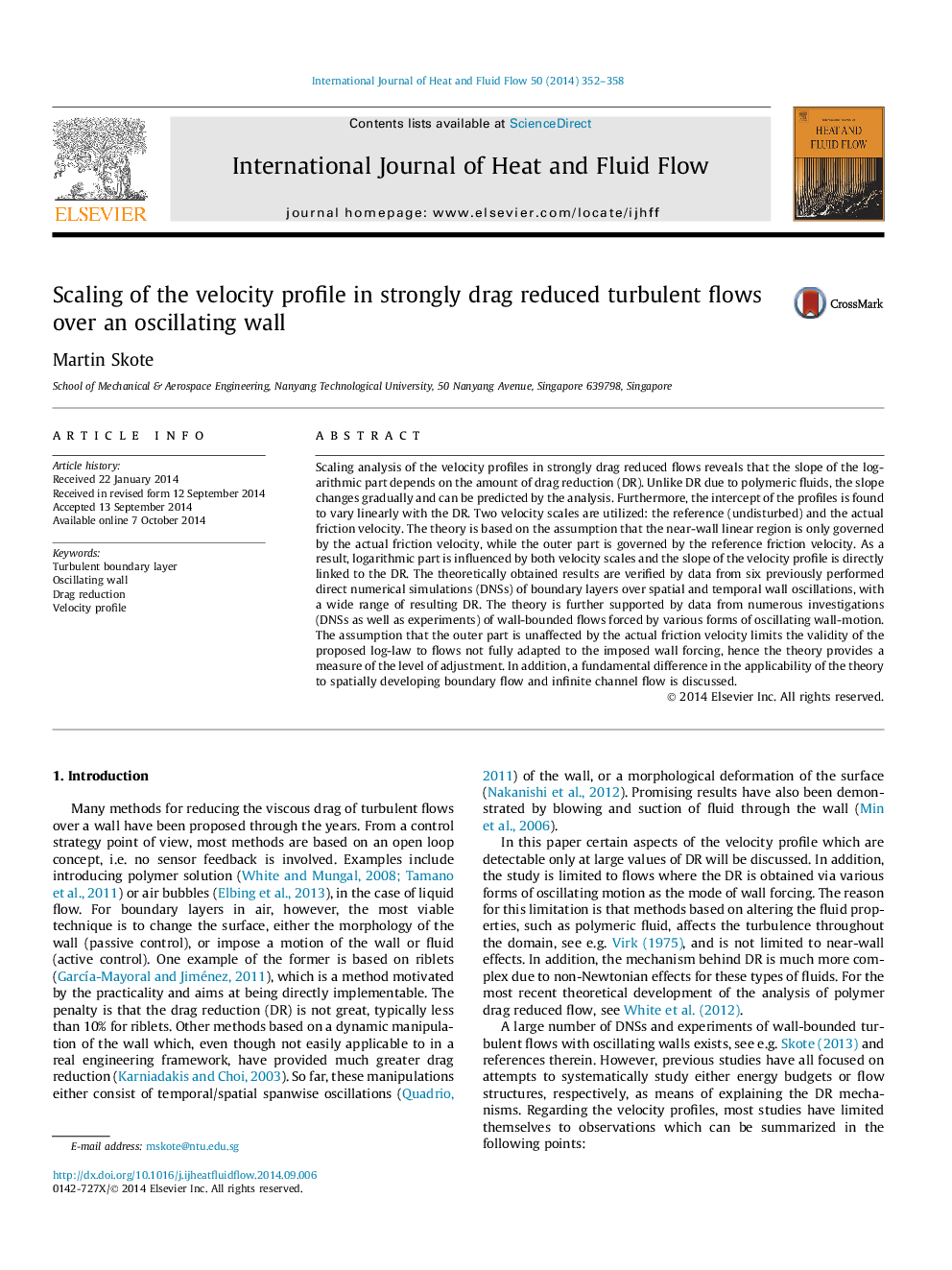| کد مقاله | کد نشریه | سال انتشار | مقاله انگلیسی | نسخه تمام متن |
|---|---|---|---|---|
| 7053633 | 1457631 | 2014 | 7 صفحه PDF | دانلود رایگان |
عنوان انگلیسی مقاله ISI
Scaling of the velocity profile in strongly drag reduced turbulent flows over an oscillating wall
ترجمه فارسی عنوان
مقیاس پروفیل سرعت در شدت کشیدن باعث کاهش جریان آشفته در یک دیوار نوسان شد
دانلود مقاله + سفارش ترجمه
دانلود مقاله ISI انگلیسی
رایگان برای ایرانیان
کلمات کلیدی
لایه مرزی آشفته نوسان دیوار، کاهش کشیدن، مشخصات سرعت
موضوعات مرتبط
مهندسی و علوم پایه
مهندسی شیمی
جریان سیال و فرایندهای انتقال
چکیده انگلیسی
Scaling analysis of the velocity profiles in strongly drag reduced flows reveals that the slope of the logarithmic part depends on the amount of drag reduction (DR). Unlike DR due to polymeric fluids, the slope changes gradually and can be predicted by the analysis. Furthermore, the intercept of the profiles is found to vary linearly with the DR. Two velocity scales are utilized: the reference (undisturbed) and the actual friction velocity. The theory is based on the assumption that the near-wall linear region is only governed by the actual friction velocity, while the outer part is governed by the reference friction velocity. As a result, logarithmic part is influenced by both velocity scales and the slope of the velocity profile is directly linked to the DR. The theoretically obtained results are verified by data from six previously performed direct numerical simulations (DNSs) of boundary layers over spatial and temporal wall oscillations, with a wide range of resulting DR. The theory is further supported by data from numerous investigations (DNSs as well as experiments) of wall-bounded flows forced by various forms of oscillating wall-motion. The assumption that the outer part is unaffected by the actual friction velocity limits the validity of the proposed log-law to flows not fully adapted to the imposed wall forcing, hence the theory provides a measure of the level of adjustment. In addition, a fundamental difference in the applicability of the theory to spatially developing boundary flow and infinite channel flow is discussed.
ناشر
Database: Elsevier - ScienceDirect (ساینس دایرکت)
Journal: International Journal of Heat and Fluid Flow - Volume 50, December 2014, Pages 352-358
Journal: International Journal of Heat and Fluid Flow - Volume 50, December 2014, Pages 352-358
نویسندگان
Martin Skote,
